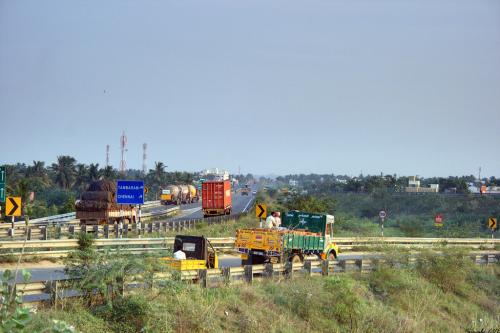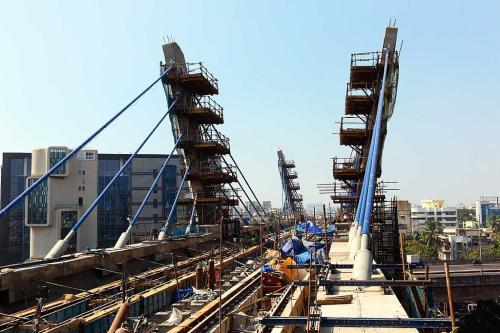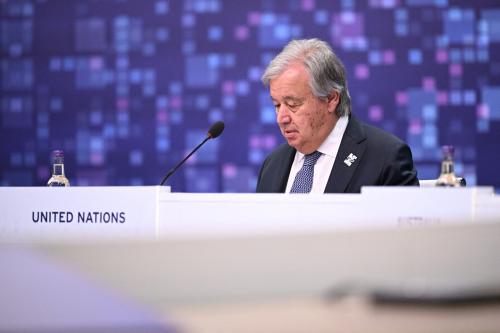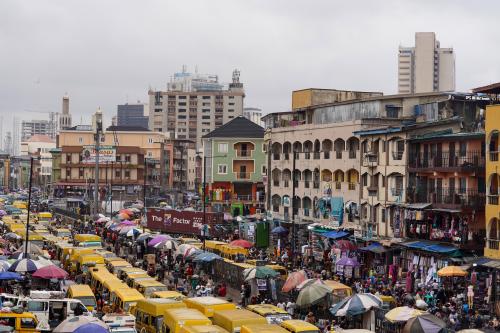Content from the Brookings Institution India Center is now archived. After seven years of an impactful partnership, as of September 11, 2020, Brookings India is now the Centre for Social and Economic Progress, an independent public policy institution based in India.
The inadequacy of quality infrastructure in India at competitive prices, leading to increased trade and transaction costs, has long been recognised as a handicap to economic development.
The Budget 2017 is a consistent and pragmatic effort, with its emphasis on giving a boost to the farm sector and fuelling large-scale infrastructure development. For the NDA government, the Budget was an opportunity to regain lost ground. But the big question is: has the Budget done enough to boost domestic demand and infrastructure development?
The inadequacy of quality infrastructure in India at competitive prices, leading to increased trade and transaction costs, has long been recognised as a handicap to economic development. India needs $454.83 billion to be spent on infrastructure development over the next five years, with 70% of funds needed for power, roads and urban infrastructure segments. Higher government spending in infrastructure area may partly address the infrastructure constraints.
The Budget gives a substantial boost to infrastructure development by increasing allocation to a record R4 trillion and the largest-ever rail budget of R1.31 trillion, an 8.26% increase over the R1.21 trillion allocated to the national carrier in FY17. The allocation to the national highways sector was also increased by 12% to R64,900 crore for FY18 as the sector has always been a priority sector for the government. As per the 12th five year plan document, National highways constitute less than 2% of the total road network but carry 40% traffic. The Budget has a significant focus on the airports development, with the finance minister informing that a select few airports from tier-II cities will be developed through the public-private partnership mode.
In addition to this, a new Metro rail policy will also be on the anvil, which will focus on innovative models of financing such projects and their implementation. Thus, there is a focus on multi-modal transportation system for smooth movement of people and goods that would improve competitiveness of capital and labour. Further, the FM said that 2,000 km of coastal connectivity roads have been identified for construction and development to facilitate connectivity of ports and remote villages.
According to IBEF, infrastructure spending in India currently stands at 8% of GDP and going forward the aim is to increase it to 10%. The extent of scaling up needed in infrastructure development in India is huge. China spends nearly 11% (with more than three-times India’s GDP) of its GDP on infrastructure, one of the factors responsible for competitiveness of its manufacturing sector. The projected investment in infrastructure in the 12th Plan (2012-17) was $1 trillion with projected investment of 48% from the private sector. However, private sector participation in infrastructure has been low due to several bottlenecks and challenges related to availability of bankable infrastructure projects along with land acquisition and environmental issues. With respect to land acquisition, all of us know what happened to the proposed amendments to the Land Act 2013.
For instance, there was opposition regarding the kind of compensation to be provided to those affected by the land acquisition process, consent clause, lack of clarity on social and environmental impact assessment procedures, etc, which delay the execution of infrastructure projects. Land amendments are crucial for ‘Make in India’.
Private sector mostly participates in infrastructure projects through Public Private Partnerships (PPPs). One of the key reasons why infrastructure development in the country has failed to take-off in a big way is due to the dismal performance of the PPPs, which at one point of time were considered to be a panacea for all infrastructure challenges facing the country. They were scaled-up to a large extent in the last decade presuming that they would transform India’s infrastructure landscape.
A close scrutiny of the PPP projects in India reveal that they are beset with a plethora of problems including flawed risk-sharing, trust deficit between the government and private sector, decision on user charges etc. Undoubtedly, there are several examples of successful cases of PPPs in India but the numbers are few. Hence, in 2015 the government set up a committee headed by Vijay Kelkar to review the experience of PPP policy and suggest measures to improve their effective implementation. The committee submitted its report on revisiting and revitalising PPPs in late 2015. It suggested the government to strengthen three key pillars of a PPP framework namely governance, institutions and capacity and also asked for amendments to the prevention of corruption Act which does not distinguish between genuine errors in decision making and acts.
The government did take into consideration the recommendations of the committee and has focused on kick-starting delayed projects, but it is yet to act on other key recommendations including setting up of a dedicated institute for PPP’s, proper risk-sharing measures, independent regulation in a few sectors, protection to private investment in infrastructure etc. The government needs to give a serious thought and revisit the PPP models and re-instate some confidence into the private sector to take interest again. India needs to develop a better regulatory mechanism, a rational pricing system, reform financial markets and strengthen dispute resolution mechanisms so that the private sector finds infrastructure projects economically feasible.
Undoubtedly, infrastructure is a key priority sector clearly made evident from the increasing allocations to infrastructure in every budget since the government came to power. There is consistency and coherence in the government’s policy on infrastructure. But is the effort on the part of the government enough? It is evident that this sector needs consolidation in policy framework starting from approval to implementation, an institutional mechanism for fair pricing and competition, and developing financial markets along with enhanced budgetary allocation even in future for achieving India’s long-term growth potential.
This article first appeared in The Financial Express, on 13 February 2017. Like other products of the Brookings Institution India Center, this article is intended to contribute to discussion and stimulate debate on important issues. The views are of the author(s). Brookings India does not have any institutional views.









Commentary
Op-edIndian Budget 2017’s impetus to infrastructure may not be enough to revive sector
Financial Express
February 13, 2017